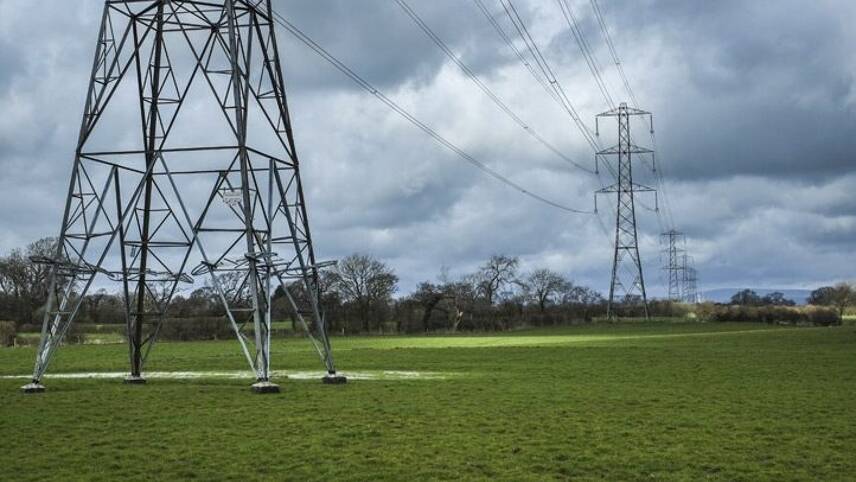Register for free and continue reading
Join our growing army of changemakers and get unlimited access to our premium content

The energy sector is currently the second-highest emitter in the UK
In its Energy Networks Innovation Strategy, the Energy Networks Association (ENA) lists the net-zero transition as a key theme around which current and future innovations must be centred.
The ENA praises policymakers and businesses across the utilities sector for investing in green innovation, noting that 1,100 grid innovation projects were underway as of the end of March. Among these projects are the UK’s first grid-injected hydrogen trials, currently underway at Keele University, virtual power plants in Yorkshire and West Sussex and the Social Constraint Managed Zone, whereby businesses have partnered with fuel poverty charity National Energy Action to provide low-income homes with the ability to sell flexibility services to the grid.
But the ENA ultimately concludes that broader, more rapid and more joined-up action is needed if Great Britain’s energy and gas networks are to align with the UK’s long-term climate targets while addressing consumer vulnerability and preserving energy security.
In the electricity sector, the Innovation Strategy states, priority in the coming years must be given to bringing more low and zero-carbon generation onto the grid – enough not just to meet current needs, but future demand, which will rise significantly as sectors such as heat and transport are electrified. This uptick in generation must be matched with investment in technologies which enable smart and flexible systems, such as large and small-scale energy storage and other demand-response methods, optimised by technologies such as artificial intelligence (AI).
Aside from these measures – which have all been repeatedly urged before by various corporates in the energy sector and by industry bodies and think-tanks – the ENA is calling on businesses to research the operational impact of long-duration reserve services, which would need to become more commonplace as the electricity mix shifts in favour of renewables.
Electricity firms should additionally collaborate with gas firms, policymakers, academics and other bodies to co-create a national methodology for calculating the cost of carbon, the ENA recommends.
Life’s a gas
In the gas sector specifically, the ENA is recommending that businesses begin “actively developing” networks and products which are both hydrogen-ready and capable of supporting a broader array of green gases.
The Committee on Climate Change (CCC) has repeatedly advised that hydrogen is a necessity, not an option, for decarbonising heat and transport in line with the UK’s net-zero target.
But the global and domestic clean hydrogen industries, a recent Bloomberg NEF analysis concluded, are “tiny”, and will need significant long-term support from business and policymakers. Moreover, the analysis found, such support must frame hydrogen as only one piece of a wider decarbonisation puzzle, rather than a “silver bullet” for all emissions.
To that end, the ENA is calling on businesses to develop not only the technologies but the market mechanisms needed to enable the clean energy transition in the gas sector. Policymakers will need to see evidence that the transition can ensure resilience and reliability, without dramatically increasing costs for consumers, the Strategy states. Moreover, sector coupling with industries such as the built environment and transport must be considered.
All of the ENA’s calls to action are ultimately underpinned by recommendations for implementing a whole-systems approach, in which ambition and action gaps are not allowed to widen. In order to shift to this approach, gas and electricity companies alike must collaborate on solution development and scaling; the creation of cost-benefit analyses; the development of regional plans and forecasts; and improving access to and visibility of data.
ENA chief executive David Smith said all recommendations have been drafted “following extensive consultation with a range of different groups across Britain’s energy sector”, making them ambitious yet achievable.
“From connecting ever greater levels of renewable energy to finding the new solutions we need for decarbonising heat and transport; our energy network infrastructure is already at the centre of delivering a world-leading net-zero economy,” Smith said.
“That role is set to grow, as that infrastructure takes on new responsibilities to deliver decarbonisation. We need to ensure our network infrastructure is future-ready, that our approach is transparent and accountable and that it is focussed as much on local needs as it is on national ones.”
Sarah George


I see this piece is written by Sarah George. I wish she understood that electricity and hydrogen are not sources of energy, but ways of moving it around. Understanding that, she might be a bit more critical of these pronouncements.
Where does the electricity come from? Wind, solar and nuclear. The first two are unreliable, and use a lot of (fossil fuel) energy to create. Very low EROEI. Nuclear is expensive but reliable and long lived. Sadly, under a cloud for the wrong reasons. SMRs are a real alternative.
Hydrogen comes from water – brilliant, no CO2! But you need energy to extract it from the water, and that means fossil fuels. Even the CCC recognised that and said carbon capture and storage is essential to reach net zero carbon by 2050.
Can we please put some numbers in these articles and a little more scepticism about how easy it is to achieve? Ever looked at how long the biggest battery in the world – Elon Musk’s one in S Australia – would last in a blackout? Serving domestic premises only, it could keep S Australia going for 2.57 minutes. Just about long enough for a CCGT blackstart to generate electricity from ??? fossil fuels…